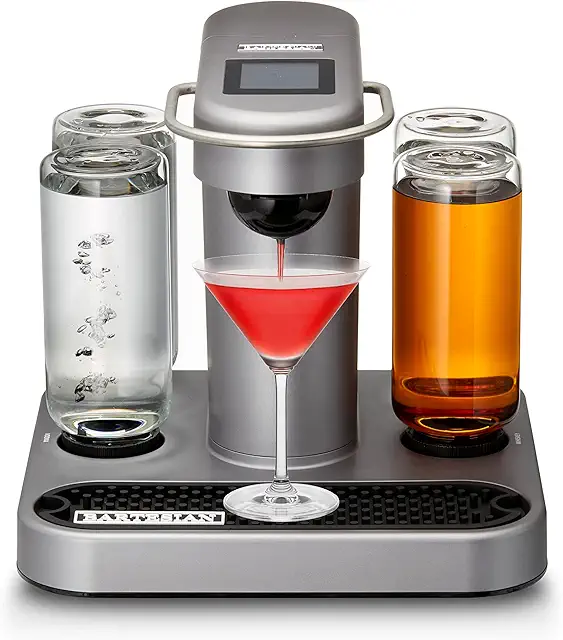
Iceland’s Hakarl, the infamous fermented shark, is a dish that often raises eyebrows among visitors to Iceland. This unique delicacy, made from Greenland shark, has a long history and a strong cultural significance in Iceland. While the thought of eating rotten shark might sound unappealing, many locals and adventurous tourists consider it a must-try experience. In this article, we will explore the fermentation process, its cultural importance, taste and texture, where to find it in Reykjavik, its historical background, health considerations, and personal experiences with this iconic dish.
Key Takeaways
- Hakarl is made from Greenland shark and undergoes a lengthy fermentation process.
- It has a strong ammonia smell and a taste that can be described as an acquired one.
- Hakarl is considered a national dish of Iceland and is often served during traditional festivals.
- You can find Hakarl in various restaurants and grocery stores in Reykjavik.
- Trying Hakarl is often seen as a rite of passage for visitors to Iceland.
Understanding Hakarl’s Fermentation Process
The Fermentation Method
So, how does shark go from ocean predator to… hakarl? It’s all about fermentation, a process that’s been used for ages to preserve food. With hakarl, it’s not just about preservation; it’s about making the shark edible in the first place. Greenland shark and basking shark meat is naturally toxic due to high levels of urea and trimethylamine oxide. Fermentation reduces these to safer levels.
- First, the shark is beheaded and gutted.
- Then, it’s placed in a shallow hole in the ground, usually lined with gravel.
- Heavy stones are put on top to press the shark, squeezing out fluids.
Duration of Fermentation
How long does this whole process take? Well, it’s not a quick turnaround. The shark typically stays buried for 6-12 weeks, depending on the season and the size of the shark. This initial stage is crucial for breaking down the meat. After this, it’s dug up and hung to dry for several months in a well-ventilated area. The drying period can last anywhere from 2 to 4 months. People who make hakarl check the shark regularly, because they know when the fermentation process is complete.
Safety Measures in Preparation
Proper preparation is key to making hakarl safe to eat. The fermentation process is what reduces the high levels of urea and trimethylamine oxide found in the shark’s flesh. If not done correctly, the hakarl can still contain harmful levels of these compounds. Even with proper fermentation, hakarl is an acquired taste, and some people may experience mild reactions. It’s important to source hakarl from reputable producers who follow traditional methods carefully.
It’s worth noting that even traditionally prepared hakarl retains a strong ammonia-rich smell and a distinctive taste. This is normal and part of the experience. However, if the hakarl smells overwhelmingly of ammonia or has an unusual texture, it’s best to avoid consuming it.
Cultural Significance of Hakarl in Iceland

Hákarl isn’t just some weird food challenge; it’s woven into the fabric of Icelandic culture. It tells a story of survival, ingenuity, and tradition. It’s more than just eating rotten shark; it’s about connecting with the past.
National Dish Status
This shark delicacy definitely holds a unique spot in Iceland. While not everyone eats it regularly, it’s widely considered a national dish. It’s something that Icelanders are proud of, even if they don’t necessarily crave it. You’ll find it mentioned in tourist guides, featured in food shows, and talked about as a symbol of Icelandic identity. It’s a conversation starter, for sure. It’s like the food equivalent of a quirky national monument. It represents the resourcefulness of the Icelandic people, who had to find ways to survive in a harsh environment. It’s a reminder of the past, and a symbol of national pride. You can find Hakarl in Iceland at many locations.
Traditions Surrounding Consumption
Eating hákarl is often tied to specific times of the year and events.
- Þorrablót: This midwinter festival is probably the most common occasion for eating hákarl. It’s a time for celebrating Icelandic culture and heritage, and hákarl is a key part of the traditional feast.
- Family gatherings: Some families have their own traditions around eating hákarl, especially during the holidays.
- Dare challenges: Let’s be real, sometimes it’s just about daring someone to try it! It’s a rite of passage for some tourists (and locals).
It’s often served with a shot of Brennivín, a local spirit nicknamed “Black Death.” The strong flavor of the Brennivín is said to help wash down the hákarl and cleanse the palate. It’s a pairing that’s as much about tradition as it is about taste.
Role in Icelandic Festivals
As mentioned, hákarl is a staple at Þorrablót, a significant midwinter festival. This festival is all about celebrating Icelandic heritage and enduring the harsh winter months. The food served at Þorrablót is traditional Icelandic fare, often including dishes that were important for survival in the past. Hákarl fits right in, representing the ingenuity and resilience of the Icelandic people. It is not just about eating; it’s about remembering and honoring the past. It’s a way to connect with ancestors and celebrate the unique Icelandic culture. Also, It’s a reminder of the challenges they faced and the resourcefulness they showed in overcoming them. It’s a symbol of national identity and pride.

Taste and Texture of Hakarl
Flavor Profile
Okay, so let’s talk about what hakarl actually tastes like. It’s… an experience. The flavor is really intense, and not always in a good way. Some people say it’s a bit like a super strong blue cheese, but with a fishy twist. Others get a whiff of ammonia, which, yeah, isn’t the most appealing thing. It’s definitely one of those foods that people either love or hate, and there doesn’t seem to be much middle ground. To make it more bearable, it’s often paired with Brennivín, a local spirit.
Texture Experience
Texture-wise, hakarl can be a bit of a surprise too. It’s often described as being kind of chewy, almost rubbery. It’s not like biting into a steak or anything; it’s got a unique feel that takes some getting used to. The outer layer can sometimes be a little firmer, while the inside is softer. It’s definitely not something you can just wolf down without thinking about it; you really have to pay attention to what’s going on in your mouth.
Comparisons to Other Foods
Trying to describe hakarl to someone who’s never had it is tough, because there’s really nothing else quite like it. People often compare it to strong cheeses, like I mentioned before, or even aged meats. But honestly, it’s in a league of its own. It’s got a funkiness that’s hard to put into words, and the ammonia notes definitely set it apart. If you’re feeling adventurous, here’s a quick comparison:
- Strong Blue Cheese: Similar intensity, but different flavor profile.
- Aged Meats: Some shared savory notes, but hakarl is much more pungent.
- Ammonia-Based Cleaners: Okay, this is a joke, but some people say they get that vibe!
Honestly, the best way to understand hakarl is to just try it for yourself. No amount of description can really prepare you for the real thing. Just be ready for a flavor explosion, and maybe have a shot of Brennivín handy!
Where to Find Hakarl in Reykjavik

Popular Restaurants
Okay, so you’re in Reykjavik and you’re feeling brave enough to try hakarl. Good for you! You’ll find it on the menu at a few restaurants that specialize in traditional Icelandic food. These places often serve hakarl as part of a tasting platter, which is a good way to sample it alongside other local delicacies. Just ask your server; they’ll point you in the right direction.
Grocery Store Options
Want to grab some hakarl to try later? Hit up one of the bigger grocery stores in Reykjavik. Bonus points if you can find a store that caters to locals rather than tourists; you might get a better price. Look for it in the refrigerated section, usually near other prepared fish products. It’s often pre-packaged and ready to eat. Some souvenir shops also carry it, but be prepared to pay a premium.
Tourist Experiences
For a truly immersive experience, consider visiting a food market or attending a cultural festival. These events often feature local vendors selling hakarl, and you might even get to see how it’s traditionally prepared. Plus, it’s a great way to meet locals and learn more about Icelandic food culture.
Trying hakarl is definitely a memorable experience. Don’t be afraid to ask questions about it, and remember to keep an open mind. You might just surprise yourself and actually enjoy it!
Historical Background of Hakarl

Origins of Fermented Shark
So, how did hakarl even become a thing? Well, back in the day, Icelanders needed to find ways to survive in a pretty harsh environment. Food preservation was super important, especially before refrigerators were around. One way they did this was through fermentation. Turns out, shark meat, specifically from the Greenland shark and basking shark, is toxic when fresh due to high levels of urea and trimethylamine oxide. Fermentation was the solution to make it edible.
Early Preparation Techniques
Imagine you’re an early Icelander. You’ve caught a Greenland shark. Now what? The early methods were pretty straightforward, if a bit intense. First, the shark would be beheaded and gutted. Then, it was put in a shallow hole in the ground, usually a gravelly or sandy area. Heavy stones were placed on top to press the shark, squeezing out the fluids. This pressing stage could last for weeks or even months. After pressing, the shark was hung to dry in the open air, often in special drying sheds, for several more months. This whole process was crucial for reducing the urea content and developing the unique flavor of fermented shark.
Evolution of Consumption Practices
Over time, the way hakarl was prepared and eaten changed. The basic principles of fermentation remained, but techniques were refined. People figured out the best times of year to catch sharks, the ideal length for pressing and drying, and even the best ways to store the finished product. Hakarl went from being a necessity to a traditional food, often eaten during special occasions like the Thorrablot festival. It became a part of Icelandic identity, a connection to the past. It’s interesting to see how something born out of necessity can become such an integral part of a culture. It’s not just food; it’s history on a plate.
This story is a testament to Icelandic ingenuity and resilience. It showcases how a community adapted to its environment, transforming a toxic resource into a sustainable food source. This process highlights the resourcefulness required to thrive in challenging conditions and the cultural significance of hakarl as a symbol of survival and tradition.
Health Considerations When Eating Hakarl

Toxicity of Raw Shark Meat
Raw Greenland shark meat is definitely not something you want to just chow down on. It contains high levels of urea and trimethylamine oxide, which are toxic to humans. Basically, you’d be poisoning yourself. That’s why the fermentation process is so important; it reduces these compounds to safe levels. Think of it like this: you wouldn’t drink straight-up rubbing alcohol, right? Same idea here. The fermentation is what makes it edible. It’s a pretty intense process, but it’s what allows people to enjoy this Icelandic delicacy without getting sick.
Nutritional Value
After all that fermentation, what’s left in terms of nutrition? Well, hakarl isn’t exactly a superfood. It does contain some protein, but the fermentation process breaks down a lot of the original nutrients. It’s also pretty high in sodium. Honestly, people aren’t eating hakarl for its health benefits. It’s more about the cultural experience and the unique flavor. If you’re looking for a nutritional powerhouse, you’re better off with some skyr or some fresh fish. But hey, at least it’s not completely devoid of nutrients. Here’s a quick breakdown:
- Protein: Moderate
- Sodium: High
- Other Vitamins/Minerals: Low
Potential Allergies and Reactions
Even after fermentation, there’s still a chance of allergic reactions. Shark meat, like other seafood, can trigger allergies in some people. Also, the fermentation process itself can create compounds that some individuals might be sensitive to. If you have any known seafood allergies, it’s best to be cautious. Start with a very small piece and see how your body reacts. And if you experience any symptoms like itching, swelling, or difficulty breathing, seek medical attention immediately. Better safe than sorry, right? It’s also worth noting that the strong ammonia smell and taste can be off-putting and might cause some people to feel nauseous, even if they aren’t technically allergic. So, be prepared for a potentially intense sensory experience. Some people find the taste of fermented shark meat overwhelming.
It’s important to remember that everyone reacts differently to new foods. What one person finds delicious, another might find repulsive. And what one person can tolerate without any issues, another might be allergic to. So, listen to your body and be mindful of any potential reactions when trying hakarl for the first time.
Personal Experiences with Hakarl
First Impressions
Okay, so, hakarl. Where do I even begin? My first encounter was… memorable. In Reykjavik, trying to be all adventurous and stuff. I walked into a small restaurant that was recommended by a local, and there it was on the menu. I figured, when in Iceland, right? The smell hit me first – a strong ammonia scent that I wasn’t prepared for. The initial bite was definitely a shock to the system. It’s not like anything I’ve ever tasted before. It’s kind of fishy, but also cheesy, and then there’s that lingering ammonia thing going on. Not gonna lie, I almost gagged. But I persevered, because, you know, gotta try everything once.
Common Reactions
From what I’ve gathered talking to other people who’ve tried hakarl, my reaction wasn’t unique. Most people seem to have a pretty strong reaction, either positive or negative. Some people describe it as tasting like really old cheese mixed with fish and cleaning fluid. Others find it strangely addictive, like a weird acquired taste. I’ve seen people spit it out immediately, and I’ve seen people ask for seconds. It’s a real conversation starter, that’s for sure. I think it’s one of those things you have to experience to understand. It’s interesting to see how different cultures interpret this beloved dish, like unique meatballs.
Advice for First-Time Tasters
If you’re planning on trying hakarl, here’s my advice:
- Don’t smell it too much before you eat it. Seriously, the smell is half the battle.
- Start with a small piece. You can always have more if you like it (though I doubt you will).
- Have something to drink nearby. Brennivín (Icelandic schnapps) is the traditional pairing, but honestly, anything strong will help.
- Don’t be afraid to spit it out if you really can’t handle it. There’s no shame in admitting defeat.
- Remember, it’s an experience! Try to appreciate the history and culture behind it, even if you don’t love the taste.
Ultimately, trying hakarl is more about the story than the flavor. It’s a way to connect with Icelandic history and tradition, and it’s a guaranteed conversation piece. Whether you love it or hate it, you’ll definitely have a story to tell.
Final Thoughts on Hákarl
So, there you have it—Hákarl, Iceland’s infamous fermented shark. It’s definitely not for everyone, and honestly, it can be a bit of a challenge to get down. But if you’re feeling adventurous and want to try something truly unique, it might just be worth a shot. Just remember, it’s all about the experience. Pair it with a strong drink, hold your nose if you need to, and dive in. Who knows? You might find it’s not as bad as everyone says. Or, you might just want to stick to the hot dogs next time.

Frequently Asked Questions
What is Hakarl?
Hakarl is fermented shark, a traditional dish from Iceland made from Greenland shark that has been cured and dried.
How is Hakarl prepared?
To make Hakarl, the shark meat is buried in the ground for several months to ferment, then hung to dry for a few more months.
What does Hakarl taste like?
The taste of Hakarl is very strong and can be described as similar to stinky cheese or ammonia, with a fishy aftertaste.
Is Hakarl safe to eat?
Yes, Hakarl is safe to eat after the fermentation process, which removes the toxins found in raw shark meat.
Where can I try Hakarl in Reykjavik?
You can find Hakarl in many restaurants in Reykjavik, such as Cafe Loki and Islenski Barinn, or buy it in local grocery stores.
What should I drink with Hakarl?
It’s common to drink Brennivín, an Icelandic schnapps, with Hakarl to help wash down the strong flavor.
